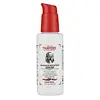What's inside
What's inside
 Key Ingredients
Key Ingredients

 Benefits
Benefits

 Concerns
Concerns

 Ingredients Side-by-side
Ingredients Side-by-side

Aloe Barbadensis Leaf
MaskingAscorbic Acid
AntioxidantDimethyl Sulfone
SolventHyaluronic Acid
HumectantNiacinamide
SmoothingRetinol
Skin ConditioningSulfated Olive Oil
CleansingSalicylic Acid
MaskingRosa Canina Fruit Oil
EmollientCarbomer
Emulsion StabilisingArginine
MaskingMelaleuca Alternifolia Leaf Oil
AntioxidantLavandula Angustifolia Oil
MaskingCananga Odorata Flower Oil
MaskingCentella Asiatica Extract
CleansingPelargonium Graveolens Oil
MaskingPhenoxyethanol
PreservativeEthylhexylglycerin
Skin ConditioningAloe Barbadensis Leaf, Ascorbic Acid, Dimethyl Sulfone, Hyaluronic Acid, Niacinamide, Retinol, Sulfated Olive Oil, Salicylic Acid, Rosa Canina Fruit Oil, Carbomer, Arginine, Melaleuca Alternifolia Leaf Oil, Lavandula Angustifolia Oil, Cananga Odorata Flower Oil, Centella Asiatica Extract, Pelargonium Graveolens Oil, Phenoxyethanol, Ethylhexylglycerin
Water
Skin ConditioningPropylene Glycol
HumectantHamamelis Virginiana Extract
AntiseborrhoeicHamamelis Virginiana Water
AstringentAloe Barbadensis Extract
Skin ConditioningGlycerin
HumectantRosa Damascena Flower Water
MaskingSodium PCA
HumectantRosa Canina Fruit Oil
EmollientAscorbic Acid
AntioxidantSodium Hyaluronate
HumectantCitrus Limon Peel Extract
EmollientCucumis Sativus Fruit Extract
EmollientCaprylyl Glycol
EmollientPhenoxyethanol
PreservativeEthylhexylglycerin
Skin ConditioningXanthan Gum
EmulsifyingWater, Propylene Glycol, Hamamelis Virginiana Extract, Hamamelis Virginiana Water, Aloe Barbadensis Extract, Glycerin, Rosa Damascena Flower Water, Sodium PCA, Rosa Canina Fruit Oil, Ascorbic Acid, Sodium Hyaluronate, Citrus Limon Peel Extract, Cucumis Sativus Fruit Extract, Caprylyl Glycol, Phenoxyethanol, Ethylhexylglycerin, Xanthan Gum
Ingredients Explained
These ingredients are found in both products.
Ingredients higher up in an ingredient list are typically present in a larger amount.
Ascorbic Acid is is pure Vitamin C. This form makes up the largest amount of vitamin C found naturally in our skin.
Not only is vitamin C great for your overall health and immune system, it also has plenty of benefits on your skin.
Vitamin C is best used for brightening skin. It improves dark spots, acne scars, and hyperpigmentation. This is because it blocks the process of skin darkening when exposed to UV.
Remember: Vitamin C should not replace sunscreen!
Your skin uses vitamin C to build collagen. Collagen is one key component in having a strong skin barrier and plump skin. Vitamin C also plays a role in regulating collagen, thus making it effective in improving wrinkles and fine lines.
Ascorbic acid shows potent antioxidant activity. As an antioxidant, it helps fight free-radicals. Free-radicals are molecules that may damage your skin cells. These antioxidants also protect skin against UV damage.
The best formulations include Vitamin E and/or ferulic acid. These two ingredients help stabilize and provide a boost in the benefits of ascorbic acid. This is because ascorbic acid becomes unstable when exposed to UV and air. In fact, you can tell your ascorbic acid has oxidized when it turns an orange-yellow color.
Ascorbic acid is generally compatible with other ingredients. However, using ascorbic acid with other active ingredients might cause irritation. Two ingredients: copper ions and benzoyl peroxide, will inactivate ascorbic acid completely.
Read more about other types of Vitamin C:
Foods rich with vitamin C include oranges, strawberries, broccoli, bell peppers, and more. When consuming Vitamin C, your skin receives a portion of the nutrients.
Learn more about Ascorbic AcidEthylhexylglycerin (we can't pronounce this either) is commonly used as a preservative and skin softener. It is derived from glyceryl.
You might see Ethylhexylglycerin often paired with other preservatives such as phenoxyethanol. Ethylhexylglycerin has been found to increase the effectiveness of these other preservatives.
Phenoxyethanol is a preservative that has germicide, antimicrobial, and aromatic properties. Studies show that phenoxyethanol can prevent microbial growth. By itself, it has a scent that is similar to that of a rose.
It's often used in formulations along with Caprylyl Glycol to preserve the shelf life of products.
Rosehip Oil is a non-fragrant plant oil. Rosehips are a fruit from a rose bush and are edible. This oil has skin conditioning and hydrating properties.
Rosehip contains Vitamin C, Vitamin E, fatty acids and linolenic acids. These nourish your skin barrier. Having hydrated skin may help reduce the appearance of fine-lines and wrinkles.
Another great component of Rosehip Oil is Vitamin A, or retinol. Vitamin A encourages your skin to create more collagen.
Rosehip oil may help with reducing pigmentation. The lycopene and beta-carotene have skin-lightening properties. However, more studies are needed to confirm this.
Learn more about Rosa Canina Fruit Oil